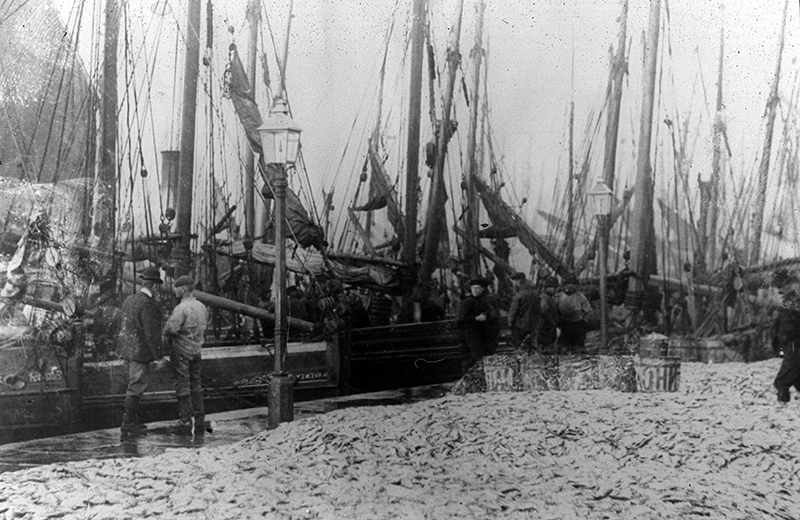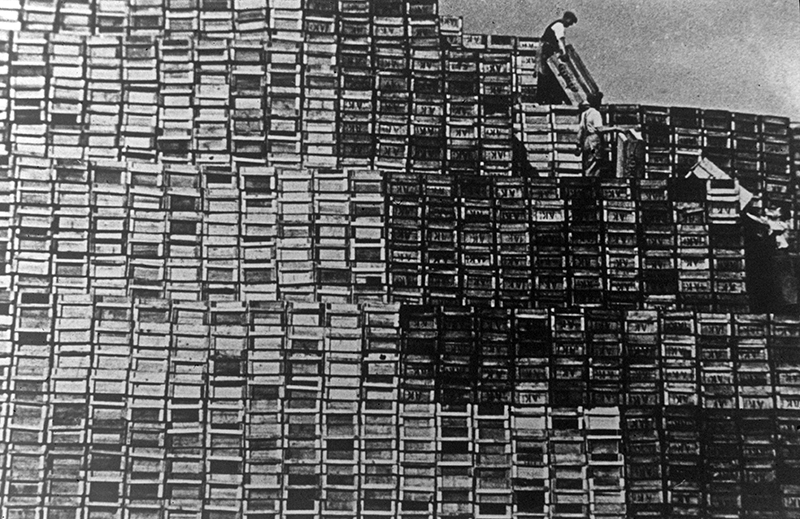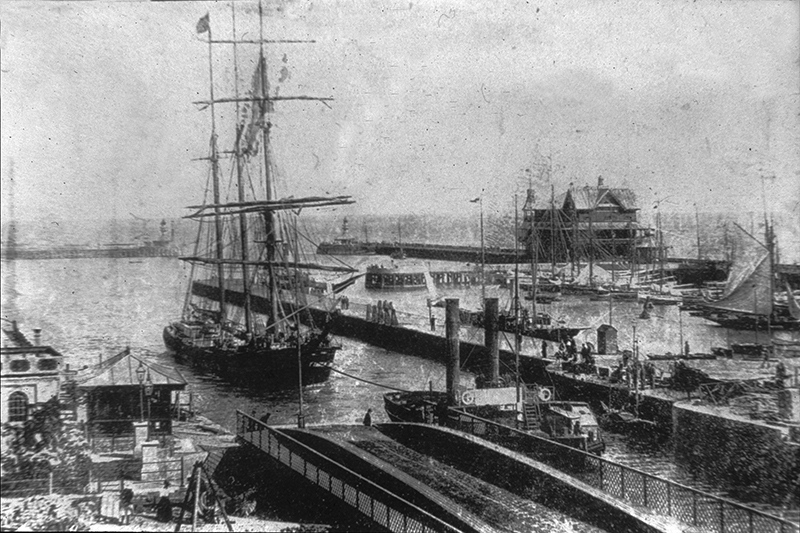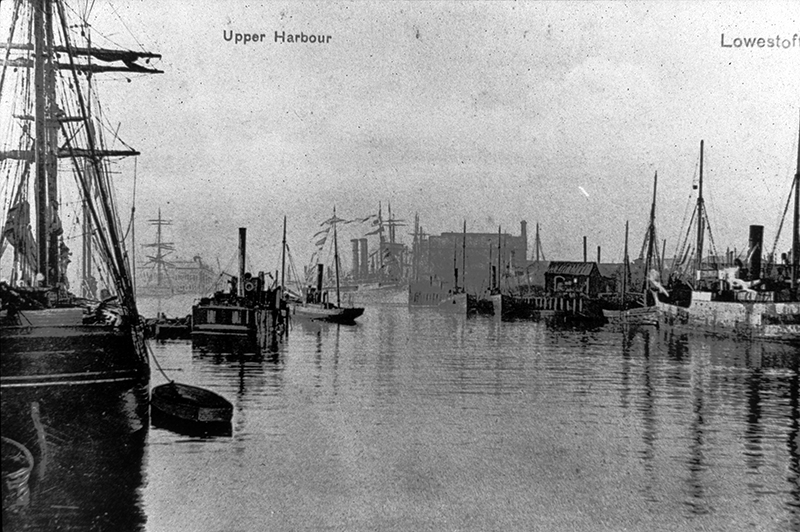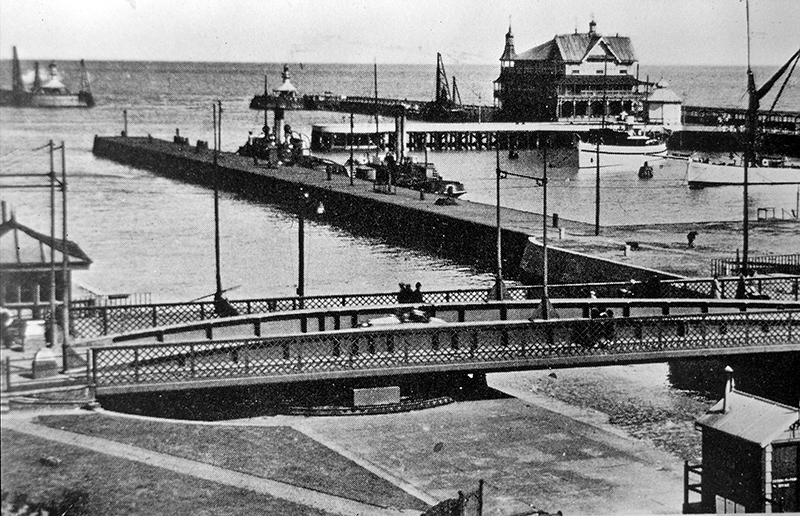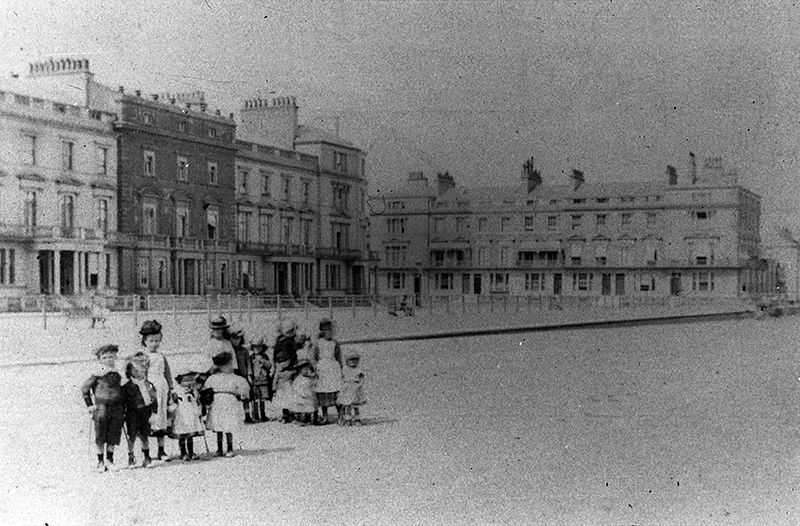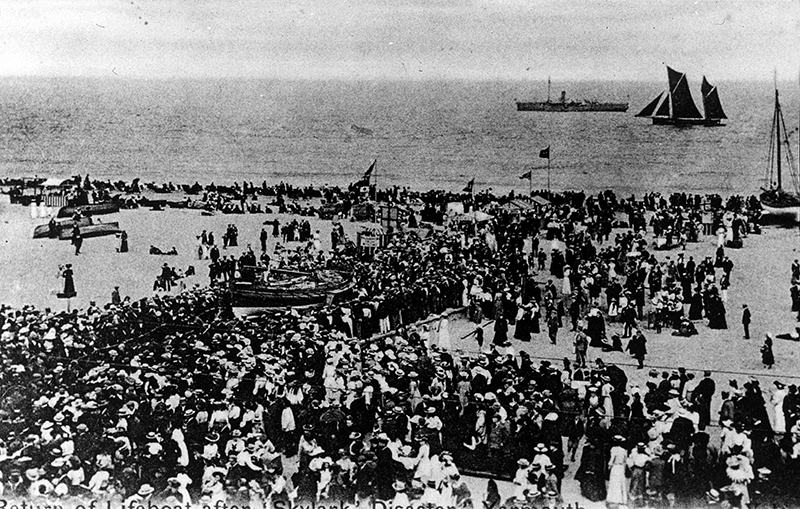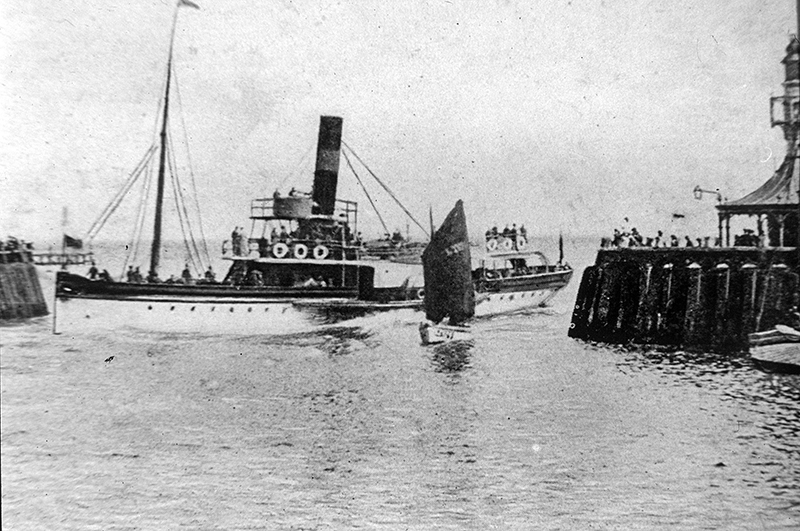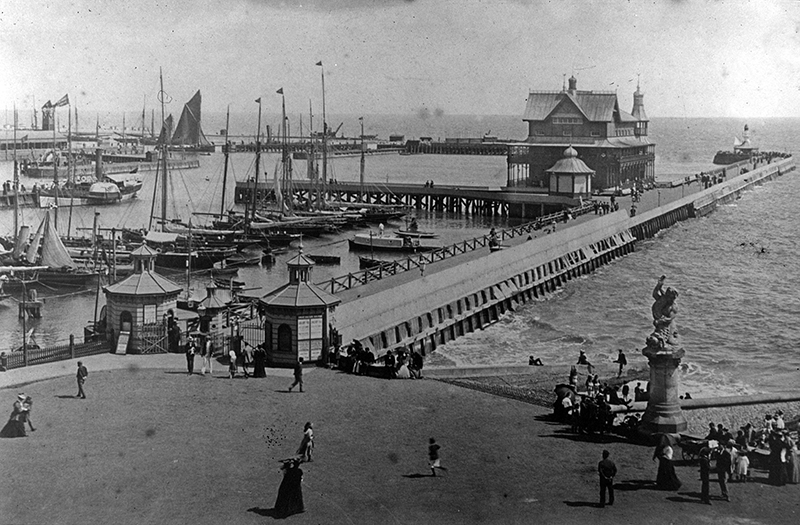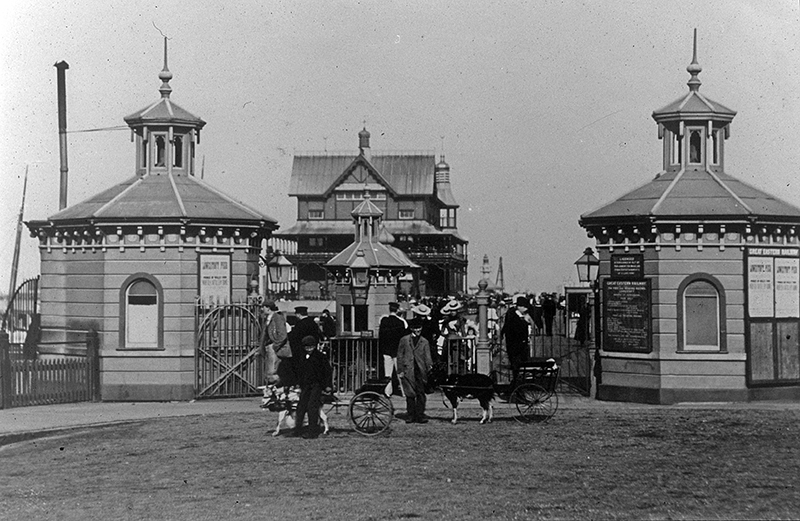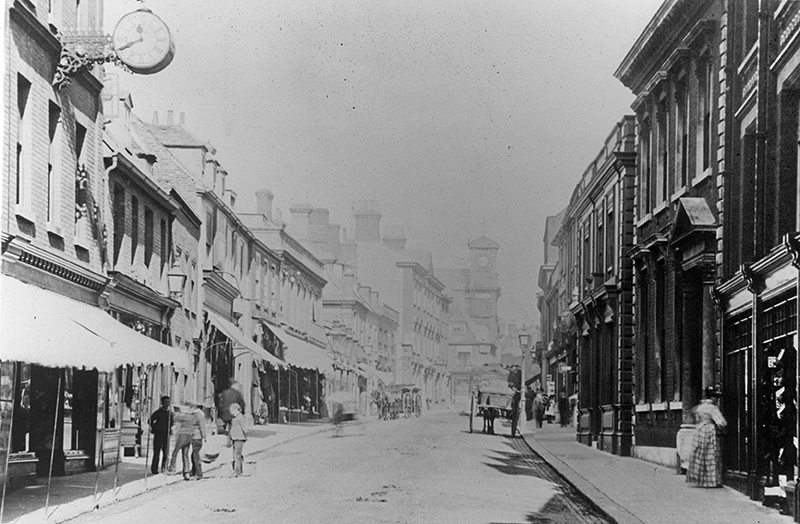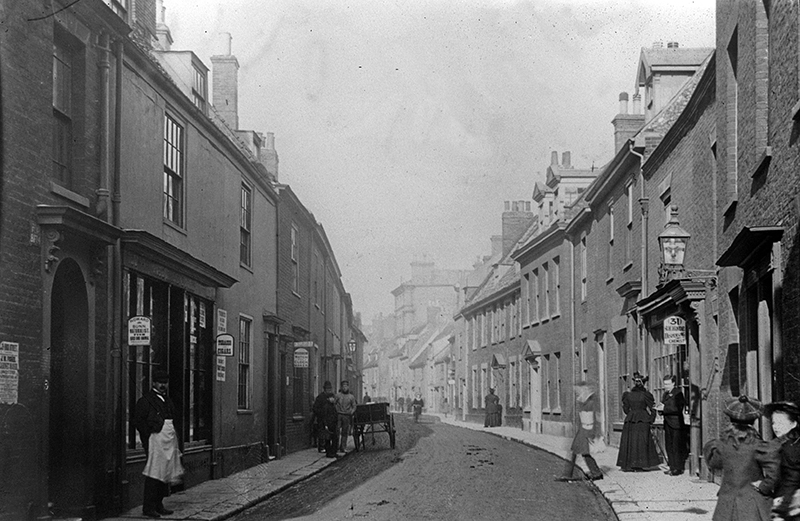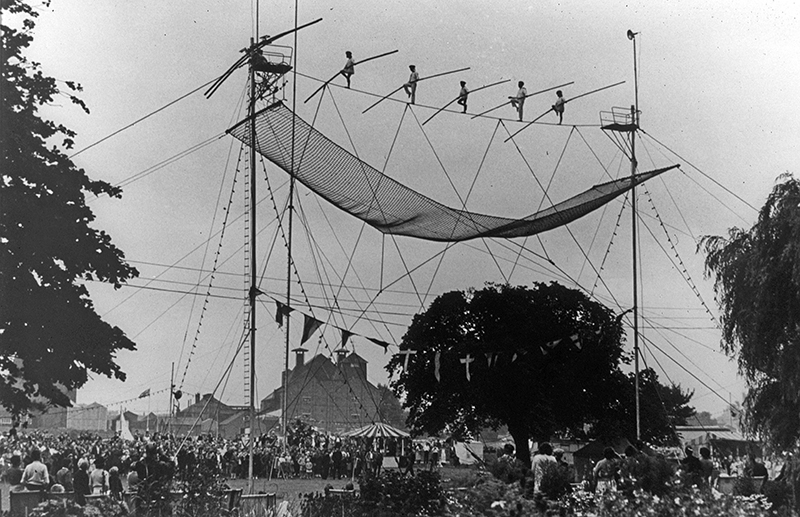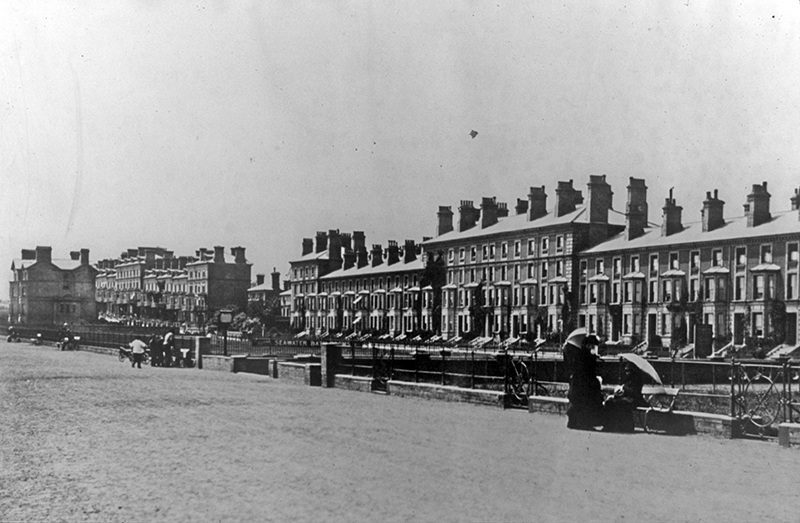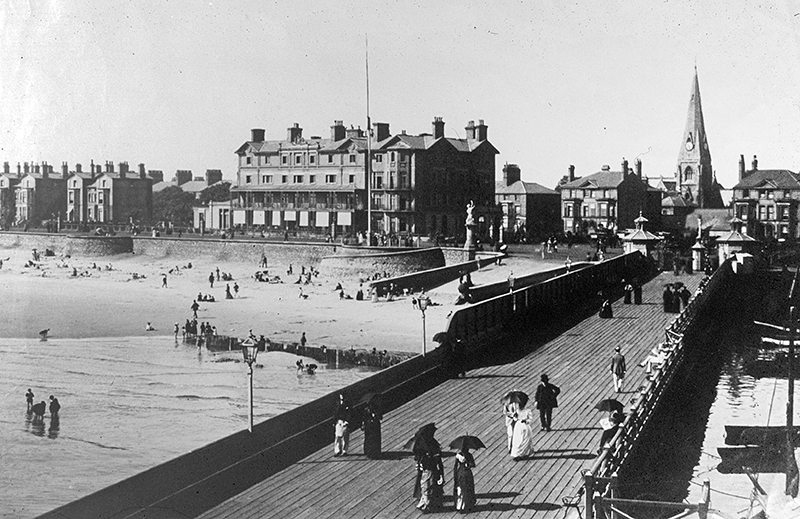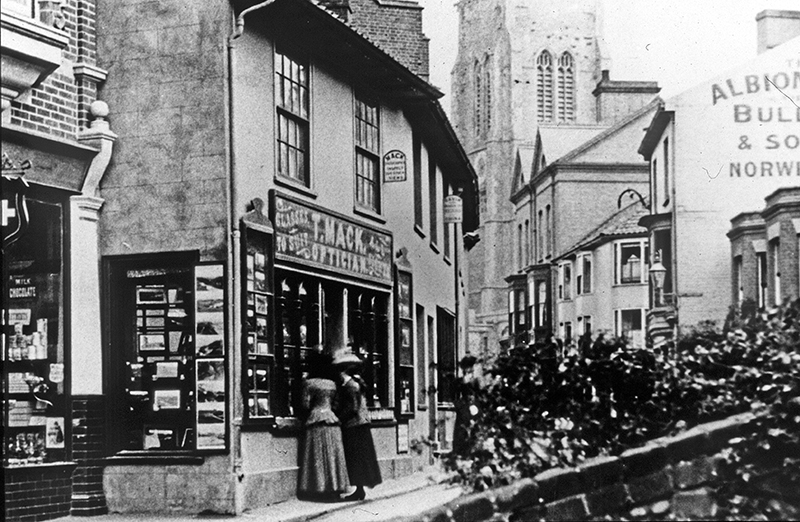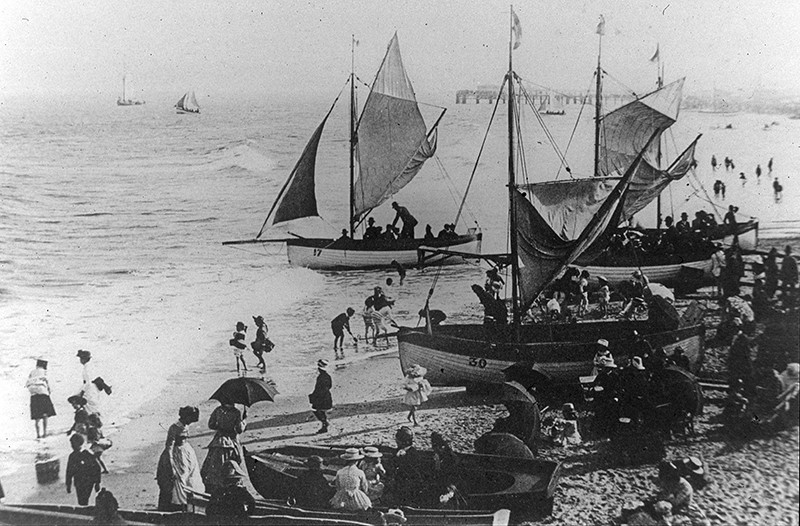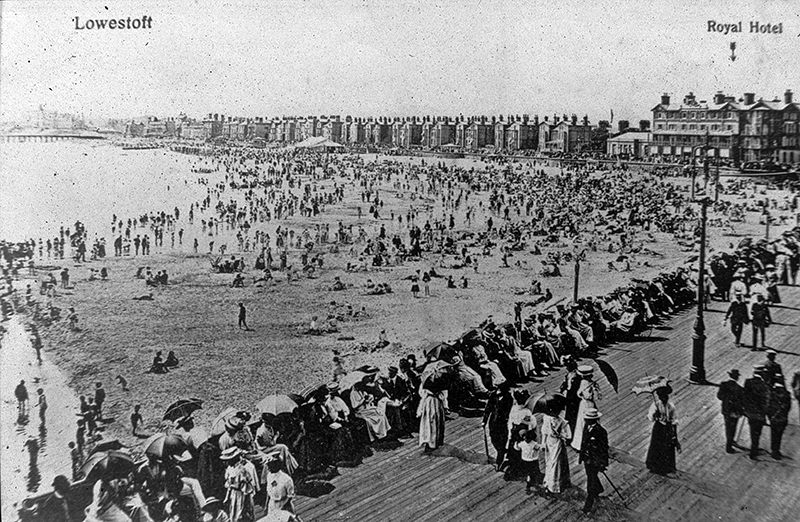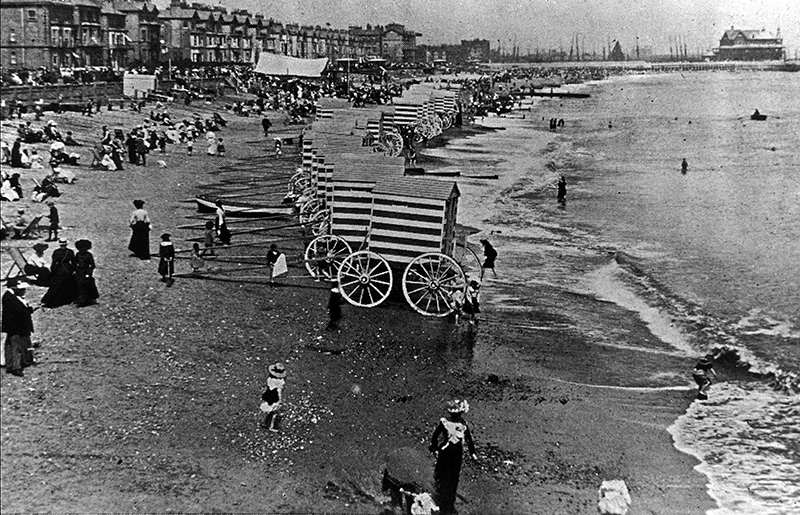Suffolk Victorian Seaside Resorts & Fishing Towns
- Lowestoft
Until the early 1830s Lowestoft was overshadowed by nearby Great Yarmouth, but then the town was given a major boost with the opening of the Mutford lock which gave seagoing vessels access to the Waveney River allowing them to travel inland to Beccles. Subsequently the opening of the 'new cut' canal in 1833 provided a river route to Norwich, further enhancing the town. However, and more significantly, in 1846/47 Sir Samuel Morton Peto constructed a railway link from a new modern harbour to both Reedham and Norwich, thus establishing Lowestoft as as a major east coast port. The railway not only stimulated the fishing industry but was also key to Lowestoft attracting well-to-do holidaymakers who viewed Lowestoft as an up-market 'watering-place'. Although the town supported many other industries, Lowestoft pottery being just one, fishing remained its major industry into the 20th century. Herring was a major part of the fishing trade, and in its heyday fleets of boats lay in wait for the fish as they migrated south down the east coast - as reflected in these wonderful images.

